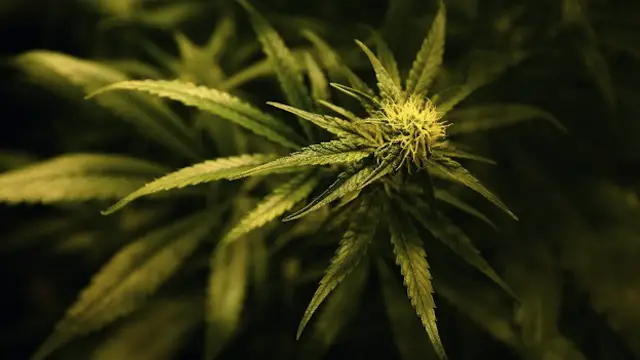30th November 2016
By Marco Torres
Guest Writer for Wake Up World
The world is slowly but surely turning the page on one of the most fundamental rights we have on this Earth — the right to consume, cultivate and possess a plant. When it comes to cannabis, that right has been stripped away from many populations globally for decades.
Earlier this month [November], just days after voters in the U.S. state of Ohio rejected a proposal to legalize cannabis for recreational use, Mexican authorities ruled that cannabis — whether smoking, consuming or cultivating — is a fundamental human right. The Mexican Supreme Court ruled by a 4 to 1 vote that banning the consumption and cultivation of cannabis for personal use violates the human right to free development of one’s personality.
[pro_ad_display_adzone id=”110028″]
“This vote by Mexico’s Supreme Court is extraordinary for two reasons,” says Hannah Hetzer of the US Drug Policy Alliance, which campaigns for the relaxation of drug laws. “First, it’s being argued on human-rights grounds, and secondly, it’s taking place in one of the countries that has suffered most from the war on drugs,” she says.
Cannabis reached the United States at the beginning of the 20th century, arriving in the southwest from Mexico, as immigrants fled the country during the Mexican Revolution of 1910-1911. The cultivation of cannabis, commonly known as marijuana, can be traced back at least 12,000 years, which places the plant among humanity’s oldest cultivated crops.However, modern humans have found it acceptable to prohibit the use of one of the most therapeutic plants in the world based on mostly political reasons.
A federal law called the Marijuana Tax Act banned its use and sales in 1937. Prior to 1937 in the United States (and 1928 in the United Kingdom), cannabis had enjoyed a 5,000 year run as a therapeutic plant with no history of illegality.
Four US states — Colorado, Washington, Alaska and Oregon — have legalised the personal use of cannabis and Canada is expected to follow suit. More than a dozen U.S. states have now completely decriminalized the act of possessing marijuana. It’s a far cry from initiatives in 2011 when the US federal government decreed that marijuana had no accepted medical use and should remain classified as a highly dangerous drug like heroin.
We now know that accepting and promoting the powerful health benefits of marijuana would instantly cut huge profits geared towards cancer treatment and the U.S. would have to admit it imprisons the population for no cause. Nearly half of all drug arrests in the United States are for marijuana.
Bills to legalise cannabis for medical use are under debate in Brazil, Chile, Colombia and Costa Rica. The world is moving towards its inhabitants finally being able to once again possess, sell, transport and cultivate the plant.
Several other countries have moved towards more lenient laws on cannabis use, but none have done so solely on the basis of human rights. Most, like Ireland, which in November 2015 moved towards legalising supervised heroin use and possible decriminalization of other drugs, have cited health, compassionate and economic grounds.
“We’re seeing a new rationality in relation to drug laws,” says David Nutt of Imperial College London, who is a former UK government adviser on drugs. “At last some countries have the courage to admit that the ‘war on drugs’ is futile and does more harm than good.”
For more information, please see The War On Drugs: How the “Land of the Free” Became the “Home of the Slaves” for Over 2 Million Americans.
Top 10 Health Benefits of Cannabis
1. Cancer: Cannabinoids, the active components of marijuana, inhibit tumor growth in and also kill cancer cells. Western governments have known this for a long time yet they continued to suppress the information so that cannabis prohibition and the profits generated by the drug industry proliferated.
THC that targets cannabinoid receptors CB1 and CB2 is similar in function to endocannabinoids, which are cannabinoids that are naturally produced in the body and activate these receptors. The researchers suggest that THC or other designer agents that activate these receptors might be used in a targeted fashion to treat lung cancer.
For more information, please see Over 100 Scientific Studies Agree: Cannabis Annihilates Cancer.
2. Tourette’s Syndrome: Tourette’s syndrome is a neurological condition characterized by uncontrollable facial grimaces, tics, and involuntary grunts, snorts and shouts. Dr. Kirsten Mueller-Vahl of the Hanover Medical College in Germany led a team that investigated the effects of chemicals called cannabinols in 12 adult Tourette’s patients. A single dose of the cannabinol produced a significant reduction in symptoms for several hours compared to placebo, the researchers reported.
3. Seizures: Marijuana is a muscle relaxant and has “antispasmodic” qualities that have proven to be a very effective treatment for seizures. There are numerous cases of people suffering from seizures that have only been able to function better through the use of marijuana.
4. Migraines: Since medicinal marijuana was legalized in California, doctors have reported that they have been able to treat more than 300,000 cases of migraines that conventional medicine couldn’t through marijuana.
5. Glaucoma: Marijuana’s treatment of glaucoma has been one of the best documented.
6. Multiple Sclerosis: Marijuana’s effects on multiple sclerosis patients became better documented when former talk-show host, Montel Williams began to use cannabis to treat his MS. Marijuana works to stop the neurological effects and muscle spasms that come from the fatal disease.
7. ADD and ADHD: A well documented USC study done about a year ago showed that marijuana is not only a perfect alternative for Ritalin but treats the disorder without any of the negative side effects of the pharmaceutical.
8. IBS and Crohn’s: Marijuana has shown that it can help with symptoms of the chronic diseases as it stops nausea, abdominal pain, and diarrhea.
9. Alzheimer’s Disease: Despite what you may have heard about marijuana’s effects on the brain, the Scripps Institute, in 2006, proved that the THC found in marijuana works to prevent Alzheimer’s by blocking the deposits in the brain that cause the disease.
10. Premenstrual Syndrome: Just like marijuana is used to treat IBS, it can be used to treat the cramps and discomfort that causes PMS symptoms. The use of cannabis for PMS actually goes all the way back to Queen Victoria.
For more information, please see: Cannabis: The Most Important Vegetable on the Planet.
Article sources:
- scribd.com
- bigbudsmag.com
- theguardian.com
- newscientist.com
- berkeleypatientscare.com
- washingtonpost.com
- safeaccess.ca
Previous articles by Marco Torres:
- Hemp Can Free Us From Oil, Prevent Deforestation and Cure Cancer – So Why Is It Illegal?
- The Endocannabinoid System and How THC Cures Cancer
- Cannabis-Based Batteries Could Change the Way We Store Energy Forever
- Cannabis Oil Cures Infant of Cancer, Dissolves Inoperable Tumor
- 5 Reasons to Juice Rather Than Smoke Cannabis
- Study Shows The Therapeutic Effects of Marijuana on Autistic Children
- 5 Diseases Proven To Respond Better To Cannabis Than Prescription Drugs
- Another Reason Marijuana is Illegal: It Prevents the Spread of HIV
- 4 Diseases That Can Be Reversed Naturally Without Pharmaceutical Drugs
- Woman Shrinks Inoperable Mass, Heals Her Thyroid Disease With Cannabis Oil
About the author:
Marco Torres is a research specialist, writer and consumer advocate for healthy lifestyles. He holds degrees in Public Health and Environmental Science and is a professional speaker on topics such as disease prevention, environmental toxins and health policy.
This article reproduced with permission from PreventDisease.com
[pro_ad_display_adzone id=”110027″]








